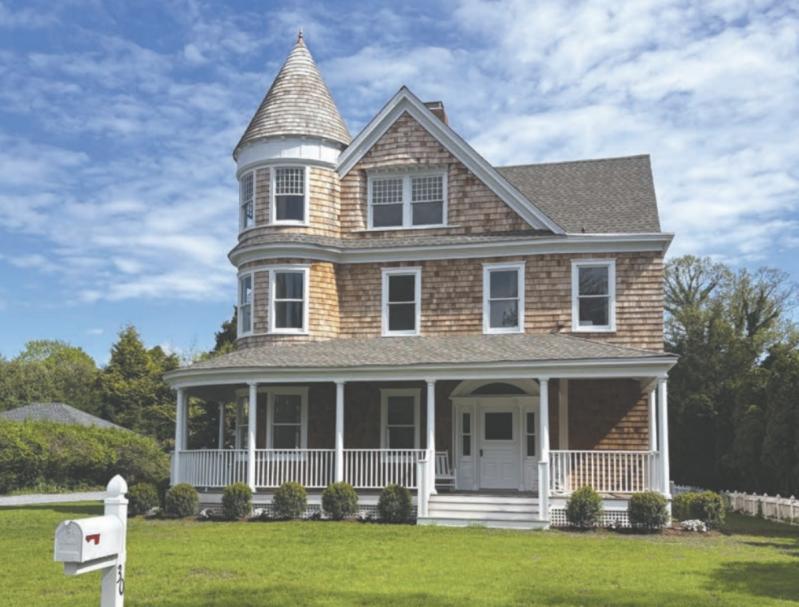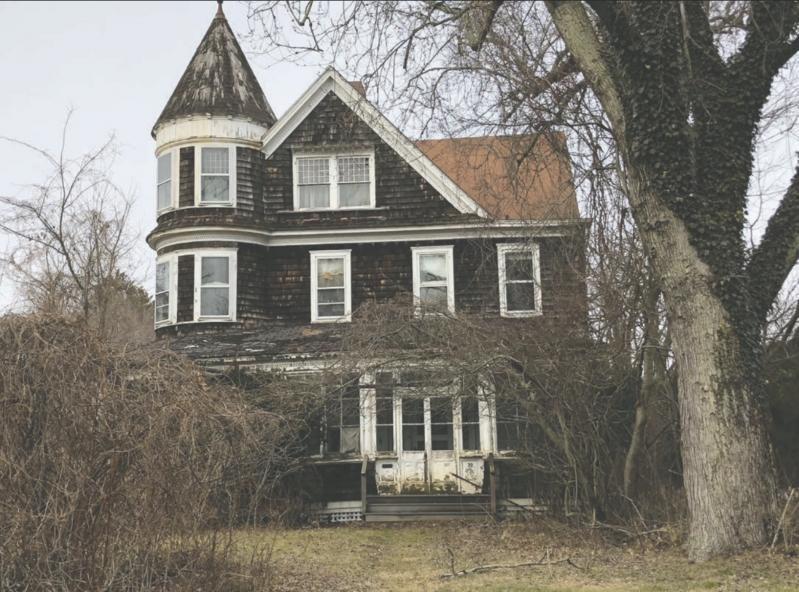Edward Tyler Huntting Jr. of Huntting Lane, East Hampton, grew up playing tennis at the Maidstone Club. He was tall and handsome, graduated from East Hampton High School in 1952, and was a Theta Chi fraternity man at Bucknell University. He was a veteran who did two stints in the Army, then worked as an executive salesman on the road between Chicago and San Francisco. He had an acerbic wit. In the 1950s, he was reportedly voted “Number One Bachelor of Chicago.”
Edward Tyler Huntting Jr. of Huntting Lane was also a neighborhood eccentric who, toward the end of his life, was compared to Boo Radley — and described with something less than full respect as “the Rake Man of Huntting Lane,” because he reportedly had a habit of threatening passers-by with garden tools — in a story published in Air Mail, Graydon Carter’s gossip-for-the-jet-set online newsletter, in August 2024.
Huntting, who was raised as “Tyler” but preferred to be called “Ed,” died of pneumonia and Covid-19 in January of 2024 at a nursing home in Southampton.
But this is not an obituary.
Huntting’s final wishes dictated that he did not want an obituary written. Nor did he want a funeral, or even a headstone to mark his grave. So when this member of an old East Hampton family died, the local newspaper of record discreetly looked the other way and his passing went largely unremarked upon — until that Air Mail story last summer, which recounted police reports that painted Huntting as a deranged hermit with a tendency to scream and occasionally throw things at the curious trespassers who not infrequently strolled onto his lawn and up his driveway to get a closer look at his large, dilapidated Victorian house, believing it to be abandoned.
That house, at 30 Huntting Lane, and built magnificently in 1896 in the Queen Anne style, was where Huntting spent both his early years and the last three decades of his life. It had been falling into disrepair since the 1990s. Well before Huntting went into hospice care, the front porch was caving in. Young troublemakers had enjoyed throwing rocks through the front windows. The house had been “devoured by weeds and was sloughing off shingles” and “looked like something out of a Hitchcock movie,” Air Mail wrote. It was Grey Gardens redux.
Tom Strong knew nothing of Huntting’s story when the two men first encountered each other.
While on a landscaping gig elsewhere on the lane in 2004, Strong told EAST, he first noticed Huntting laboring to push a hand mower through the tall grass on the property. “I stop and watch him for a few seconds and see that he is not making any headway on the grass using that old, dull reel mower,” Strong said. “While this is happening, I am thinking to myself about how I can grab his attention and ask if he would like me to mow it quick as a favor as it would only take me five minutes and would not be much of a bother. So at this point, the gentleman looks up and sees me staring at him. I can tell he was already very frustrated from the mower not being very useful, so having a spectator probably really set him off. He throws the mower handle down, starts screaming at me, and for lack of a better term, flips me the bird.”
Thirteen years later, Strong, who by then was working as an officer for the East Hampton Town Police Department but was still mowing lawns on the side for extra cash, answered a classified ad in The Star seeking landscaping help. The address: 30 Huntting Lane.
“I realized that he was probably living on a very fixed income so I advised him that I would cut the lawn for $25 and I would do it every two or three weeks when I observed it getting high,” Strong recalled. “When I would show up to mow, he would come out of the house to chat. These talks would slow my schedule up, but I realized that he had nobody else to socialize with and he looked forward to the talks when I would come to mow, so I accepted it and also grew to enjoy hearing his stories.”
So began an unlikely association that took the two men from strangers to friends over the course of six years. Little by little, Strong said, he attempted to save the house from total collapse, often spending his own money. Huntting’s clothing had holes and he ate little but tinned sardines and cabbage, which he walked a short distance to buy at Stop and Shop. The reasons for his self-isolation and apparent anguish were buried with him, but he allowed few people into his life and fewer into the house.
According to another village resident, who befriended Huntting in 2018 when he fell and hurt himself in his driveway, the house was indeed, as Ed said himself, “the most beautiful house in East Hampton”; it was also knee-deep in refuse, with rainwater cascading into the bedrooms and hallways from holes in the roof.
“I would buy him clothes, vitamins, food, medication, newspapers, et cetera. I would fix things around the house for him,” Strong said.
When Huntting was at the Hamptons Center for Rehabilitation and Nursing, Strong went to visit him almost every day. “One day when I arrived, he had lost the ability to talk louder than a whisper because he had become too weak. I read the newspaper to him for a time, told him stories about local happenings, and just shot the breeze even though he couldn’t talk.”
Then Huntting smiled and reached out for a handshake. Strong recalled this handshake lasting longer than one typically should. The final words Huntting spoke to his friend were, “I’m very fortunate that I was able to know you, Tom.”
“At that point, he laid back and closed his eyes and went to sleep,” Strong recalled. “I told him I would come the next day to check on him and bring his paper. I left the Hamptons Center and made the 25-minute drive home. By the time I reached my driveway, I got a call from the doctor that Ed had passed away.”
Huntting had been married once, briefly, but had no children. When he died, he left the house and his savings — just over a million dollars — to Tom Strong.
It was a house full of stories. James Edward Huntting, the grandfather of Edward Tyler Huntting Jr., built it while serving as president of the East Hampton Lumber and Coal Co. Strong recalled finding pictures of Ed Huntting’s mother, Hilda, together at the house with Little Edie Beale of, yes, Grey Gardens fame.
The house was only ever home to five people in its 128-year history, all of them Hunttings. Soon enough, if real estate trends continue, there will be new residents. The structure has been restored by Strong to its former glory, a fact that surely would have pleased his late friend to no end, and as of press time was on the market for $8,495,000, with J.B. Andreassi of Compass Real Estate, a cousin of Strong’s, serving as the exclusive listing agent. The first weekend of May, some 75 curious people — some house-hunting, others just dying to get a peek inside an address that had become rather famous in local circles — showed up at an open house.
“The house is truly a step back in time to when tradesmen really cared about their craft and their work showed it,” Strong said. “It’s a work of art and hard to let go. Everyone who walks into that door has the same reaction — they just stand there in awe. It’s truly something else from a better time, where integrity and hard work still really meant something. I hope Ed would be proud of the work that has been done to make his family’s estate beautiful again.”
A few days after that open house, during a private tour, a little brown-and-gray sparrow became trapped in the last room shown, flapping frantically, and bumping into windows. Those present speculated that the bird was the spirit of Edward Tyler Huntting Jr., appalled over the idea of so many strangers poking around his private domain.
Strong opened a window and the ghost-bird flew out, leaving his house for the last time, and making room for whatever story comes next.


